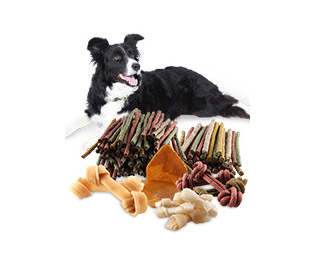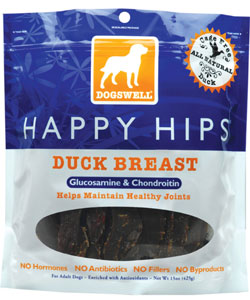Most commercially available dog treats contain a range of undefined ingredients, including sugars, and often exceed the recommended daily energy allowance for treats (‘complementary feed’), warn researchers in the Vet Record.
They say treat labels should be more explicit and provide more detailed information on ingredients and energy content to prevent dogs becoming overweight or obese and at increased risk of conditions like diabetes.
Dog treats represent the fastest growing segment of the pet food industry. European regulation states that dog treats should be labelled as ‘complementary feed’ and sets out rules for labelling to provide adequate information for consumers.
World Small Animal Veterinary Association (WSAVA) guidelines also state that daily treat intake should not exceed 10% of a dog’s energy needs (known as maintenance energy requirement or MER).
But little is known about the nutritional value of treats and their impact on the dog’s diet, health and wellness, despite the popularity of such products.
So researchers led by Giada Morelli at the University of Padua in Italy, set out to compare the nutrient composition of different categories of treats and to verify whether daily intake recommendations on the label were in accordance with WSAVA guidelines.
They identified 32 popular dog treats available in pet shops and supermarkets (five biscuits, ten tender treats, three meat-based strips, five rawhides [dry bovine skin], twelve chewable sticks and six dental care sticks).
Products were analysed for levels of minerals, starch, simple sugars (glucose, fructose and sucrose) and the amino acid hydroxyproline (a component of collagen).
They found that three out of four (76%) of treats contained between four to nine ingredients, and that ingredients were not precisely described on the label. For example, biscuits and dental sticks had ‘cereals’ listed as the first ingredient, while tenders, meat strips, rawhides and chewable sticks had ‘meat and animal derivatives’ listed first.
Almost half of products mentioned ‘sugars’ on the label’s ingredient list and all contained varying amounts of minerals.
The most calorically dense treats were biscuits, whereas the least calorically dense were dental sticks. When caloric density was expressed as kcal/treat, rawhides were the most energy-dense products, followed by chewable sticks and dental sticks.
When manufacturers’ feeding instructions (number of treats/day) were followed, on average, biscuits accounted for 16% of MER for dogs of any size; rawhides exceeded 25% MER for small-sized dogs and 18% MER for medium-sized dogs. Chewable sticks surpassed 10% MER for all size dogs, reaching 16.9% MER in small-sized dogs. Only feeding instructions for dental sticks remained below 10% MER for every dog size.
This is the first investigation to categorise dog treats and determine their nutrient profile,” write the authors.
They point to some study limitations, such as the small number of treats that were analysed in each category. Also, these results may not be representative of all products worldwide given the wide number of dog treats available on the market.
Nevertheless, they say their results suggest that treat labelling should include more information on the ingredients used, and that producers should reconsider the feeding instructions they provide on labels, especially for small dogs.
Caution should also be adopted when considering treats for dogs with specific ingredient sensitivities or in dogs with conditions such as heart failure and kidney disease due to their potential high mineral content, they add. Finally, they say future studies should sample a greater number of products to provide more precise data.
Source: Science Daily media release
Journal reference: Giada Morelli, Eleonora Fusi, Sandro Tenti, Lorenzo Serva, Giorgio Marchesini, Marianne Diez, Rebecca Ricci. Study of ingredients and nutrient composition of commercially available treats for dogs. Veterinary Record, 2017; vetrec-2017-104489 DOI: 10.1136/vr.104489

















